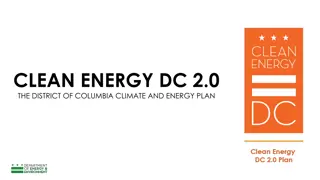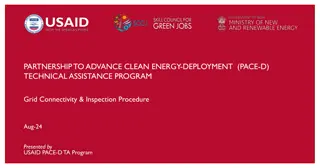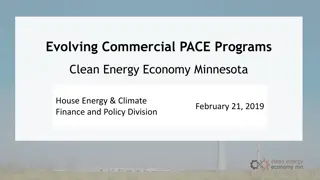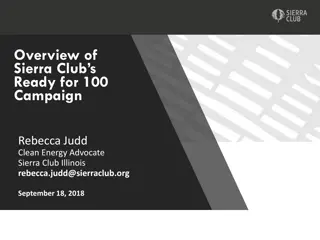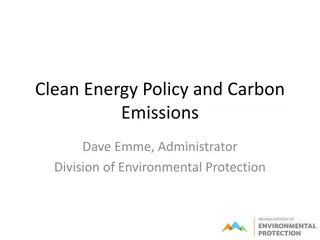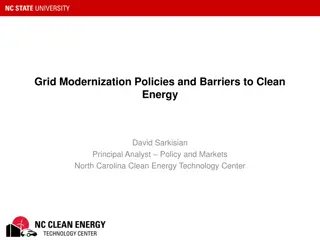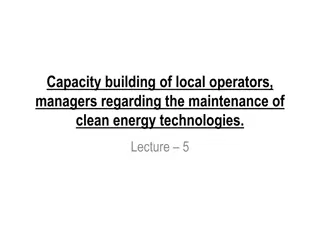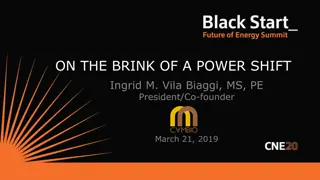Exploring Clean Energy Standards and SRECs in State Policies
Delve into the world of clean energy standards and Solar Renewable Energy Certificates (SRECs) within state policies. Learn about the variations in regulations, market demand equations, and supply dynamics. Discover the nuances of SREC sales and the impacts of policy changes on the renewable energy landscape.
Download Presentation

Please find below an Image/Link to download the presentation.
The content on the website is provided AS IS for your information and personal use only. It may not be sold, licensed, or shared on other websites without obtaining consent from the author. Download presentation by click this link. If you encounter any issues during the download, it is possible that the publisher has removed the file from their server.
E N D
Presentation Transcript
Clean Energy Clean Energy Standards 101 Standards 101 Justin Barnes, Senior Analyst North Carolina Solar Center January 26, 2012
SRECs In general, SRECs are a form of Renewable Energy Certificate or "Green tag" o SREC sale opportunities exist in states that have RPS legislation with specific requirements for solar energy, usually referred to as a "solar carve-out" States define SRECs differently State policy variations ultimately determine what an SREC is worth and how the generator is able to receive value from its sale
Major State Policy Variations Regulated vs. Restructured Electricity Markets o Determines the obligated entity: Utilities vs. Energy Suppliers (may include IOUs) o Often determines the transaction type: standard offer incentive programs (CO) vs. open trading markets (PA) vs. open trading with regulation (NJ, MA) o Penalty/compliance provisions: administrative penalties vs. SACPs (vary by state) Resource eligibility o Geographic/electricity delivery restrictions (e.g., in-state, in-region) o Resource definitions (PV only, all DG, solar water heating) o Specific size limits or other effective limitations Targets and Timelines o Modest targets (e.g., NC 0.2% by 2018) vs. ambitious targets (e.g., DE 3.5% PV by 2026) o Target formulation: MW (MA), MWh (NJ), % (most others) o Increase schedule: annual forward (most states), plateau (NM, NV), variable (MA)
Basic Market Demand Equation SREC demand SREC demand = (% standard) X (forecast retail sales) MW demand MW demand = (SREC Demand)/(Annual production (est.) per MW) Complicating Factors Complicating Factors Establishing accurate long-term retail sales forecasts Estimating solar % for DG carve-outs (or solar thermal electric vs. PV) Accounting for multi-year SREC lifetimes/carryovers Accounting for multipliers if they exist now or in the past Relevance of cost containment provisions Prospects of policy change
The Other Side: Supply SREC demand is state specific, but supply may not be Broader eligibility typically equals lower SREC values Map Source: FERC (eligibility arrows added)
Ongoing Implementation Issues Reliance on market forces vs. more bankable mechanisms Role of different sectors (residential, commercial, utility-scale) Balancing cost and ratepayer impacts vs. ratepayer benefits
Contact: Justin Barnes justin_barnes@ncsu.edu www.dsireusa.org www.ncsc.ncsu.edu






